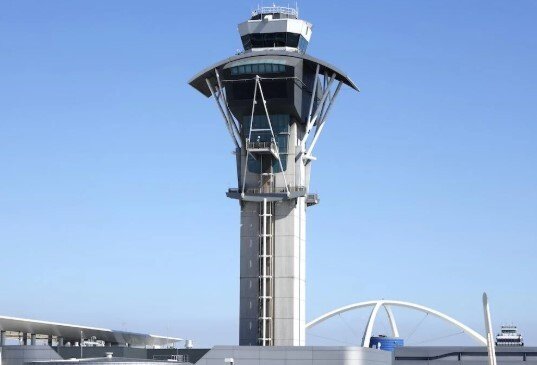ANALYSIS: Is Air Transport the Key to Restarting the US Government?
 Credit: Karen Walker October 30, 2025 | Image Credit: Mario Tama/Getty Images:
Credit: Karen Walker October 30, 2025 | Image Credit: Mario Tama/Getty Images:
Those US federal workers, including air traffic controllers and TSA airport security agents, hoping for an early end to the government shutdown so they can receive a paycheck could not have been encouraged as October bled into November.
Instead, the talk was about this shutdown, which began on Oct. 1, having the potential to be the longest in US history. The previous record of 35 days was set in the previous Trump administration until it ended in January 2019. There were no shutdowns before the 1980s and most lasted just a few days or even hours. A 21-day shutdown under the Clinton administration was the first major exception; a 16-day event under the Obama administration the second.
But no one sees how, or when, the current shutdown will end. The two congressional sides, Democrat and Republican, aren’t even meeting, let alone talking compromise. President Donald Trump seems uninterested in a deal, even if one were on the table. He was on a tour of Asia as the shutdown entered its fourth week. House Speaker Mike Johnson, a Republican, had put the House on indefinite hiatus, meaning lawmakers were not even in session to discuss a way out.
The biggest hurdle to breaking the impasse is reaching agreement across the aisle on extending healthcare benefits under the Affordable Care Act, which has nothing to do with aviation. However, among those federal workers deemed essential, and who must therefore continue to work, are controllers—FAA employees—and TSA airport screening agents, who work for the Department of Homeland Security. For now, they are working without being paid.
Disruptions across US airports seemed minimal in early October, but controllers and security agents would first have started seeing missed paychecks (delayed until the shutdown ends) around Oct. 28. That is likely to be a change point when those workers may elect to stay at home rather than work unpaid or perhaps try to get temporary paid work elsewhere. That’s when delays and cancellations could mount.
Trump arranged for military troops to continue to be paid during this shutdown, but it seems unlikely he will make a similar exemption for controllers and airport security agents. Transportation Secretary Sean Duffy warned as the Oct. 28 deadline approached that airport disruptions could become more likely and impactful.
That’s a problem for government, regardless of political leanings. The air transport system is essential to Americans, for work, leisure and the economy, and if that system is reduced to chaos by the shutdown, the public—and the businesses that depend on air transport of people and cargo—will be angry.
Furthermore, Americans have had their confidence in the safety of the US air transport system severely tested over the past year or so after several near misses and the fatal crash near Reagan Washington National Airport in January when a US Army helicopter collided with an American Airlines regional jet. The Internet and TV news programs are full of discussions about whether it’s safe to fly during the shutdown; they will get worse if it becomes clear there is a shortage of controllers and/or security agents at airports.
Pilot and ATC unions flagged the risks and called—unsuccessfully—for an immediate end to the shutdown. National Air Traffic Controllers Association president Nick Daniels said in a statement, “With each passing day, controllers become more distracted by the risk of receiving a zero-dollar paycheck on Oct. 28, despite working 40 hours per week and, in many cases, mandatory overtime due to the controller staffing shortage.”
Air Line Pilots Association president Jason Ambrosi
also raised the safety red flag. “On [Oct. 28], air traffic controllers, systems specialists, transportation security officers and thousands of other federal employees will experience their first zero-dollar pay cycle. The safety of millions of passengers and tens of thousands of tons of cargo is in the hands of these workers. Worrying about how they’ll make their mortgage payment or pay for daycare is an added stress they do not need,” he said.
Something often overlooked by the impact of a shutdown on commercial aviation is that the air transport system’s “non-essential” workers, now furloughed, are not necessarily as dispensable as that title implies. All those who support the system through their duties are enabling controllers and screeners to focus on their primary jobs, providing them the tools and information they need to function at their best.
Duffy made aviation safety and air transport infrastructure modernization significant and highly public priorities early in his term. He pledged to hire and train thousands more controllers to address shortages that existed long before the shutdown. And he was at the forefront of a campaign to modernize or replace aging—sometimes failing—ATC equipment across the country, most especially in high-traffic regions like the US northeast corridor. He has gained massive support from airlines, airports, unions, suppliers and aviation agencies. To have that campaign jeopardized or worse, to have a safety incident occur during the shutdown, would be immensely damaging. Of course, Republicans and Democrats would each point the finger of blame at the other. But Duffy is the Department of Transportation leader and the public face of this aviation safety campaign. He knows the risks, for the country and for his reputation.
Will it take an air transport system meltdown or a catastrophe to bring this shutdown to an end?
Karen Walker is Air Transport World Editor-in-Chief and Aviation Week Network Group Air Transport Editor-in-Chief. She joined ATW in 2011 and oversees the editorial content and direction of ATW, Routes and Aviation Week Group air transport content.



